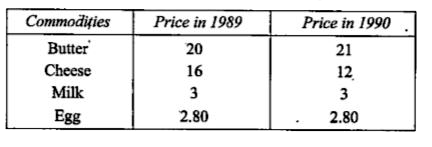Reaction of 1989 was
Nicking by restriction endonucleases
Polymerase chain reaction
Reverse genetics
Splicing.
The correct Answer is:B
Step-by-Step Solution:
1. Understanding the Context: The question asks about a significant reaction or development that occurred in the year 1989 related to molecular biology techniques.
2. Identifying Key Terms: The options provided are:
- Nicking by restriction endonuclease
- Polymerase chain reaction (PCR)
- Reverse genetics
- Splicing
3. Researching the Developments:
- Polymerase Chain Reaction (PCR): Developed in the 1980s, PCR is a technique used to amplify small segments of DNA, making it easier to study.
- Nicking by Restriction Endonuclease: This refers to the cutting of DNA at specific sites by enzymes, which was established earlier than 1989.
- Reverse Genetics: This is a method used to understand the function of a gene by analyzing the phenotypic effects of specific gene sequences, which was also developed prior to 1989.
- Splicing: This is a post-transcriptional modification of RNA, which has been known for a long time.
4. Focusing on 1989 Developments:
- In 1989, significant advancements in PCR were made, particularly the development of multiplex PCR, which allows for the amplification of multiple DNA sequences simultaneously.
5. Conclusion: Based on the information gathered, the reaction of 1989 that stands out is the advancement in the Polymerase Chain Reaction (PCR), specifically the multiplex PCR technique.
Final Answer:
The reaction of 1989 was Polymerase Chain Reaction (PCR).
---
- Nicking by restriction endonuclease
- Polymerase chain reaction (PCR)
- Reverse genetics
- Splicing
- Polymerase Chain Reaction (PCR): Developed in the 1980s, PCR is a technique used to amplify small segments of DNA, making it easier to study.
- Nicking by Restriction Endonuclease: This refers to the cutting of DNA at specific sites by enzymes, which was established earlier than 1989.
- Reverse Genetics: This is a method used to understand the function of a gene by analyzing the phenotypic effects of specific gene sequences, which was also developed prior to 1989.
- Splicing: This is a post-transcriptional modification of RNA, which has been known for a long time.
- In 1989, significant advancements in PCR were made, particularly the development of multiplex PCR, which allows for the amplification of multiple DNA sequences simultaneously.
The reaction of 1989 was Polymerase Chain Reaction (PCR).
Topper's Solved these Questions
- HUMAN EVOLUTIONBOOK - DINESH PUBLICATION ENGLISHCHAPTER - HUMAN EVOLUTIONEXERCISE - Check Your Grasp
10 Videos
- GROWTH, REPAIR, REGENERATION AND AGEINGBOOK - DINESH PUBLICATION ENGLISHCHAPTER - GROWTH, REPAIR, REGENERATION AND AGEINGEXERCISE - Brain Teasers-VI[B]
6 Videos
- HUMAN HEALTH AND DISEASEBOOK - DINESH PUBLICATION ENGLISHCHAPTER - HUMAN HEALTH AND DISEASEEXERCISE - CHECK YOUR GRASP
17 Videos
Similar Questions
Knowledge Check
Decrease in free energy of a reacting system indicates:
an exothermic reaction
an endothermic reaction
a spontaneous reaction
a slow reaction.Aan exothermic reactionBan endothermic reactionCa spontaneous reactionDa slow reaction.
Construct the consumer price index number for 1990, taking 1989 as the base year and using simple average of price relative method for the following data:

View SolutionConstruct the consumer price index number for 1990 taking 1989 as the base year and using simple average of price relative method for the following data:

View SolutionExplain the following reactions :
(a) Gabriel Phthalimide reaction
(b) Coupling reaction
View SolutionThe half-life of a reaction is halved as the initial concentration of the reaction is doubled. The order of the reaction is
View SolutionIn a reaction if the concentraion of reaction A is tripled, the rate of reaction becomes twety seven times. What is the order the reaction ?
View SolutionIn a reversible reaction, the forward reaction was 3 times faster than that of reverse reaction. The reaction quotient is.....
View SolutionIf hydrogen is added in a reaction, it is called ..................... reaction.
View Solution

